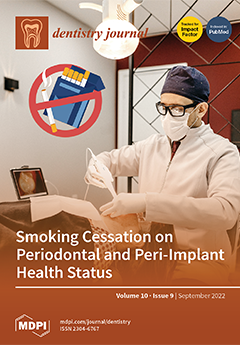The malignant potential of oral lichen planus (OLP) has been discussed and disputed for decades. The lesions are often characterized by strong expression of the TP53 protein in the basal layer of the mucosa. In 2002, we reported the presence of
TP53 mutations in nine out of 27 OLP lesions tested. At follow-up in 2009, one case of oral squamous cell cancer (OSCC) had occurred in a different site six years later. In contrast, in another case,
TP53 mutation persisted for years without malignant transformation. In a longitudinal study of eight selected patients with OSCC or different pre-malignant lesions, it was concluded that
TP53 mutations could occur early or late in the development of OSCC. A follow-up in the present, almost 20 years later, revealed that one further case of OSCC had occurred in a
TP53-mutated case of OLP, 21 years after the first sample was taken, again in a different site. With this second case, this small study now points towards a risk of developing OSCC in
TP53-mutated OLP lesions. A review of recent literature indicates a growing consensus that OLP should be regarded as a potentially pre-malignant lesion. Several protein markers have been studied, but none proved useful for prediction of malignant progression. The great majority of published studies are retrospective, and it has been suggested that multi-centre prospective studies will be needed to reach a definitive answer on the malignant potential of OLP, and particularly, to identify contributing factors. Screening for TP53 mutations could help to identify the subgroup of OLP patients that is truly at risk of developing oral cancer.
Full article






